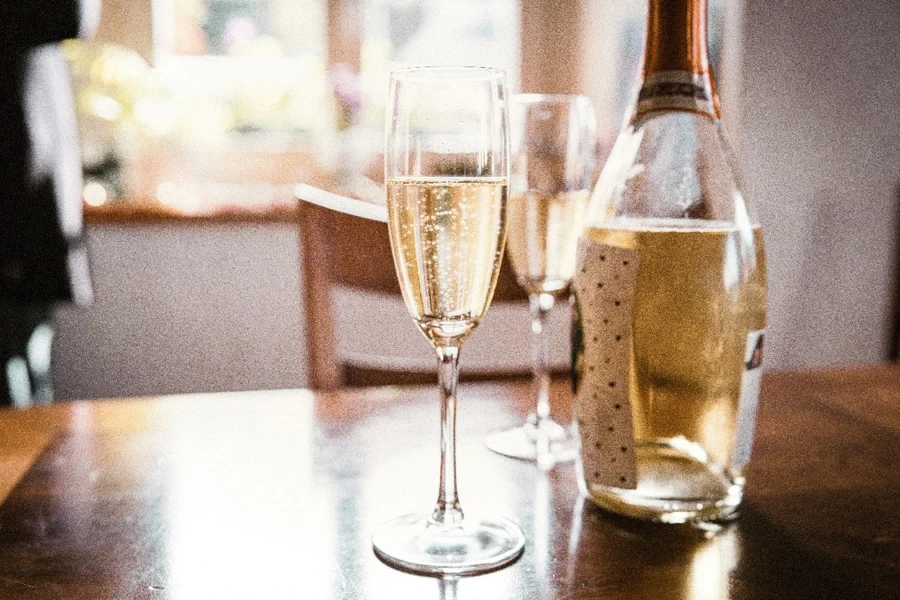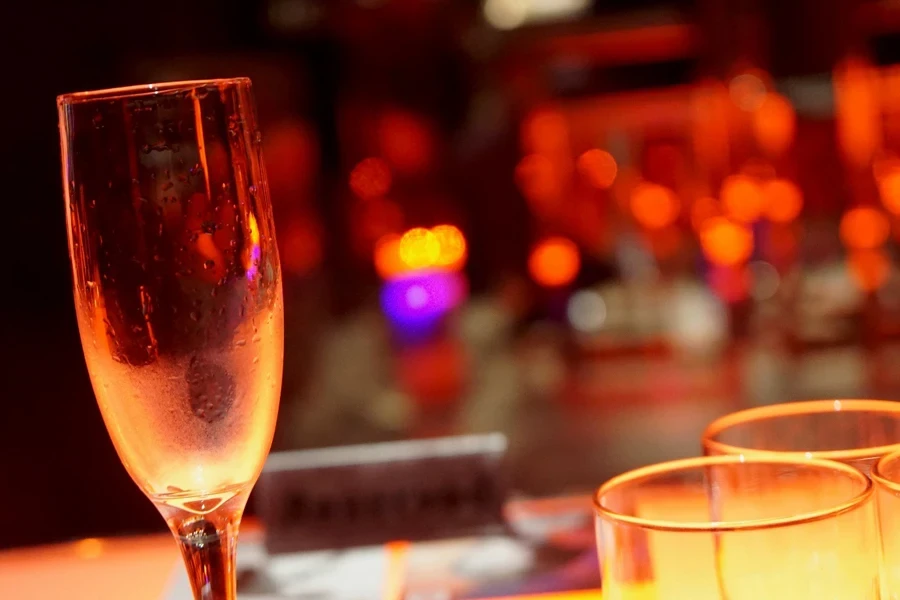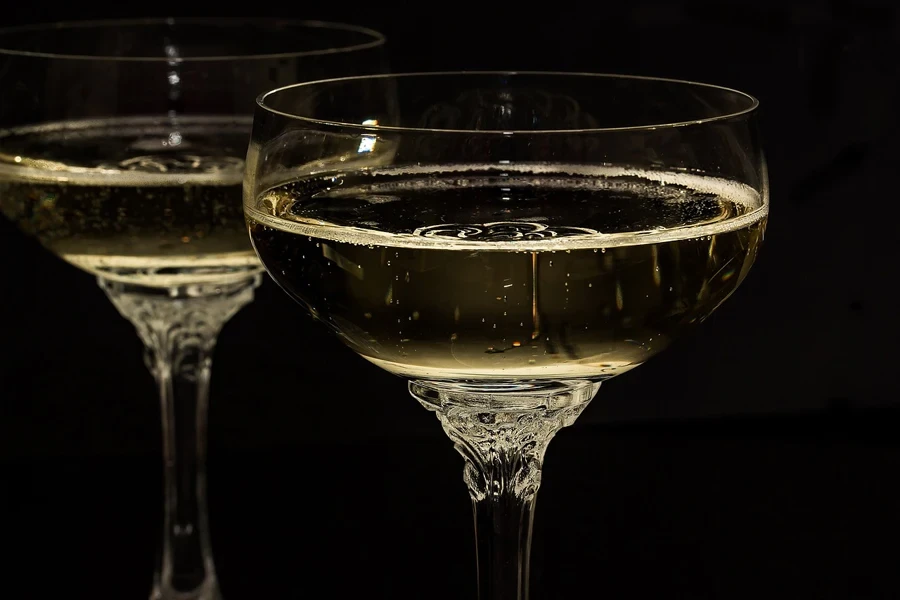Selecting the perfect champagne glass is essential for enhancing the aroma, flavor, and visual appeal of sparkling wine, making it a critical decision for hospitality businesses and retailers. With the champagne glass market evolving, understanding the latest trends, material innovations, and design features is key to meeting the growing demand for luxury glassware. Each glass type, whether coupe, flute, or tulip, offers distinct characteristics that influence the drinking experience. Professional buyers must stay informed about these developments to offer customers products that align with both functional and aesthetic expectations. This article provides valuable insights into market trends and practical tips for selecting the ideal champagne glass.
Table of Contents
● Understanding the champagne glasses market: Trends and growth
● Exploring different types of champagne glasses and their unique features
● Key factors to consider when choosing champagne glasses
● Conclusion
Understanding the champagne glasses market: Trends and growth

Champagne glass market growth and trends
The champagne glass market has witnessed steady growth, driven by the rising demand for premium glassware in both hospitality and home settings. According to WiseGuyReports, the global champagne flutes market was valued at USD 1.79 billion in 2023, with projections to reach USD 2.3 billion by 2032, growing at a CAGR of 2.83%. This growth is primarily fueled by increasing champagne consumption, which has led to a greater appreciation for high-quality glassware that enhances the drinking experience. Key factors contributing to this demand include the rise of luxury home decor and the growing trend of home entertaining. These elements are pushing both consumers and the hospitality industry to seek elegant, durable, and aesthetically pleasing glass designs.
Key market drivers and regional insights
The hospitality sector plays a significant role in driving market demand, as restaurants, hotels, and bars focus on offering premium experiences for their clientele. The North American and European markets currently dominate, thanks to their strong traditions of champagne consumption and a high concentration of luxury consumers. According to WiseGuyReports, North America held a substantial share of the market due to its focus on luxury dining and home entertaining trends. Meanwhile, emerging markets in the Asia-Pacific region are experiencing rapid growth, fueled by rising disposable incomes and a growing middle class with a taste for premium experiences. Customization and personalization options are also expanding, catering to consumers who want bespoke glassware, further influencing the market.
Exploring different types of champagne glasses and their unique features

The timeless appeal of the coupe glass
The coupe glass dates back to the 18th century and remains an iconic symbol of elegance. With its broad, shallow bowl, the coupe holds a substantial surface area, allowing for greater exposure to oxygen. This exposure accelerates the dissipation of carbonation, meaning champagne loses its bubbles faster in this glass. However, the shape is ideal for enhancing the visual appeal of champagne, especially during large gatherings or when used in champagne towers. A typical coupe holds between 6 to 8 ounces, making it well-suited for champagne cocktails where the loss of fizz is less critical. The wider surface also means aromas quickly escape, offering a brief but bold scent experience.
Why the champagne flute remains a favorite
The champagne flute’s slim and elongated design is engineered for function. Its narrow shape minimizes the surface area exposed to air, helping to retain carbonation for longer periods. The typical flute has a capacity of 6 to 8 ounces and is designed with a pointed or etched base, which helps create a consistent flow of bubbles through nucleation. This encourages a steady stream of effervescence, enhancing the sensory experience. Additionally, the flute’s long stem ensures that the drinker’s hand doesn’t come into contact with the bowl, keeping the champagne at an optimal temperature. Variations like trumpet flutes, which widen at the rim, are designed to focus the aroma towards the drinker, while stemless flutes prioritize convenience but sacrifice temperature control.
The tulip glass: A modern hybrid
The tulip glass is designed to bridge the functional qualities of both the flute and coupe. Its wider bowl, with a slightly curved body, allows for increased surface area, letting the champagne breathe just enough to enhance the complexity of aromas. At the same time, the tapered rim concentrates these aromas toward the nose, offering a heightened olfactory experience. This design also retains carbonation more effectively than a coupe, while still allowing flavors to open up. The tulip typically holds 7 to 10 ounces, and its shape makes it ideal for vintage champagnes that benefit from a broader bowl to release more nuanced flavors. The combination of a slightly wider base with a narrower opening slows the release of CO2, which helps preserve the effervescence for a longer time.
The impact of glass material
The material of the champagne glass directly affects both the drinking experience and the durability of the product. Lead-free crystal, for example, is often preferred for its thin-walled construction and higher refractive index, allowing light to pass through and enhance the appearance of the champagne. Crystal also features finer rims, which minimize interference with the drinker’s perception of taste. Traditional glass, although thicker, provides better durability for casual use and is less likely to chip. For outdoor or casual settings, acrylic glasses have become a popular choice due to their lightweight and shatter-resistant properties, though they may lack the precision and clarity found in crystal or glass. When selecting glass material, factors such as clarity, weight, and break resistance are crucial in determining the right glass for a given occasion.
Key factors to consider when choosing champagne glasses

Matching the glass to the occasion
The choice of champagne glass should align with the type of event and its level of formality. For formal gatherings such as weddings or upscale celebrations, flutes are often preferred due to their elegant design and ability to preserve carbonation. They project sophistication and are ideal for long toasts where the champagne needs to stay fizzy throughout the event. For more relaxed or vintage-themed events, coupes bring a nostalgic charm and are perfect for settings where aesthetics take precedence over functionality, such as cocktail parties. The tulip glass, with its blend of functionality and elegance, is well-suited for intimate gatherings or wine tastings, where guests are encouraged to savor both the aroma and flavor of high-quality champagne.
Material and durability
When selecting champagne glasses, the material is a critical factor in balancing durability and elegance. Crystal, known for its clarity and thin walls, enhances the champagne’s visual appeal and drinking experience. However, its delicate nature makes it more suitable for formal settings where handling is more careful. Glass provides a more robust alternative while maintaining sufficient clarity, making it ideal for casual use, bars, or larger events where durability is prioritized. Acrylic is a popular choice for outdoor events or casual gatherings due to its lightweight and shatter-resistant properties. While it doesn’t offer the same aesthetic quality as crystal or glass, acrylic is practical for environments where breakage is a concern.
Design elements that enhance the experience

The design of the glass directly impacts the champagne-drinking experience. Glasses with a wider base allow more air exposure, which helps release complex flavors, particularly in vintage champagnes. On the other hand, a narrow opening slows down the release of carbonation, maintaining the effervescence for a longer time, which is crucial for fresh, younger champagnes. Features like a nucleation point at the bottom of the flute encourage the formation of bubbles, adding a visually pleasing element to the experience. These design aspects are key when choosing glassware that enhances not just the taste but also the visual appeal of the champagne.
Capacity and practicality
The capacity of a champagne glass should be considered in relation to the setting and serving needs. Smaller flutes, typically holding around 6 to 8 ounces, are ideal for formal events, where champagne is often served in smaller portions to prevent it from warming up too quickly in the glass. For more casual settings, larger glasses of up to 10 or 12 ounces may be preferred, as they accommodate a more generous pour and allow guests to enjoy their drinks over a longer period. Matching the glass size to the occasion ensures that champagne is served in optimal conditions, preserving both its flavor and temperature.
Stem type considerations
The length of the stem plays an important role in both the aesthetics and functionality of the glass. Long stems are not just elegant but also serve the practical purpose of preventing the drinker’s hand from warming the champagne, making them ideal for formal events. Shorter stems or stemless designs offer a more modern and casual appearance, often used for outdoor or informal gatherings. However, stemless designs require careful handling, as the champagne can warm up faster due to direct contact with the hand. Choosing the right stem length is essential in balancing the glass’s look with its practical use in various environments.
Conclusion

Choosing the right champagne glass is essential for enhancing both the aesthetic and sensory experience of champagne. Whether selecting the timeless coupe, the practical flute, or the versatile tulip, each glass type offers unique benefits suited to different occasions and settings. Additionally, factors such as material, capacity, and design elements play a crucial role in determining the overall enjoyment of the beverage. By carefully matching glassware to specific events and consumer preferences, businesses can elevate the presentation and enjoyment of champagne, ensuring a premium experience for their clientele.



